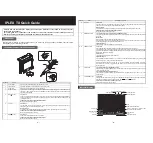
Cygnus 4+ Operating Manual
M5-CYG4P-M-01_Iss5.doc
38
7.
Calibration
Why should I Calibrate my Thickness Gauge?
Ultrasonic thickness gauges measure time in order to measure the
thickness of the material being tested. It relies on the principal
that sound travels through a material at a constant velocity or
speed. If you can accurately measure the time it takes to travel
through a material and you know its velocity then you can
calculate its thickness;
Thickness = time x velocity
2
Modern thickness gauge are easily capable of measuring time
accurately to 10 Nano seconds (0.000,000,01 second) so this is
considered to be more than sufficiently accurate.
This means the accuracy of any thickness gauge measurement
relies principally on the velocity being correct for the material
being measured.
There are tables listing the velocity of most common metals and
materials, but these velocities are only “typical” values. For
example Mild Steel has a typical velocity of 5920 m/s – but in
practice when measuring a variety of mild steel samples the
velocity can range anywhere from 5860 to 5980 m/s.
This means if you want to achieve the most accurate thickness
measurements you must calibrate your thickness gauge to a
sample of the same material you will be testing – and a sample
that you can accurately measure the thickness of with a Vernier or
micrometer.
Your measurements are only as good as your calibration
Instructions for calibrating the gauge can be found on page 39
onwards.
















































